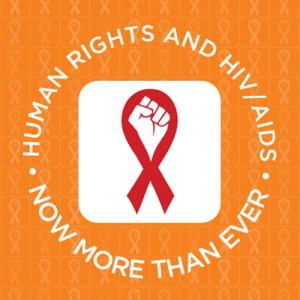 According to the World Health Organization (WHO), health is a state of complete physical, mental, and social well-being and not merely the absence of disease or infirmity. Health and welfare are basic human rights. But until now the education of the population on the topics like health, healthcare, and human rights has been low, and the governmental institutions are not interested in human rights protection, because their implementation requires appropriate resources and efforts. The problem gets deeper in the frames of human rights protection of those people who live with HIV.
According to the World Health Organization (WHO), health is a state of complete physical, mental, and social well-being and not merely the absence of disease or infirmity. Health and welfare are basic human rights. But until now the education of the population on the topics like health, healthcare, and human rights has been low, and the governmental institutions are not interested in human rights protection, because their implementation requires appropriate resources and efforts. The problem gets deeper in the frames of human rights protection of those people who live with HIV.
At the United Nations High Level Meeting on HIV/AIDS in 2006, world leaders reaffirmed that “the full realization of all human rights and fundamental freedoms for all is an essential element in the global response to the HIV/AIDS pandemic”. “Human rights and HIV/AIDS: now more than ever” declaration affirms that, now more than ever, human rights should occupy the center of the global struggle against HIV and AIDS.
10 reasons why Human Rights should occupy the center of the global AIDS struggle
These are the key supportive arguments given by people who struggle against HIV/AIDS and for the protection of human rights in that sphere.
- Universal access will never be achieved without human rights.
In 2006, world leaders committed “to pursuing all necessary effort towards the goal of universal access to comprehensive prevention programs, treatment, care and support by 2010.” Yet many of those most in need of HIV services are still the least likely to receive them:
– Women and girls face widespread discrimination and gender-based violence, including within marriage, which fuels their HIV risk and impedes their access to information and services.
– Children and youth lack unfettered access to HIV information, sexual and life-skills education.
– Most high-risk HIV populations, such as men who have sex with men, people who use drugs, and sex workers, are driven from HIV services by negative attitudes from society, stigma and discrimination, and violence from society which cuts off target populations from the services of HIV prevention, treatment and support. - Gender inequality makes women more vulnerable to HIV, with women and girls now having the highest rates of infection in heavily affected countries.
The main reason for this is women’s deep political, social, economic, and sexual subordination, which is inscribed in law and enshrined in culture and practice. Discrimination, stigma, and violence are also daily realities for many women living with HIV and AIDS. - The rights and needs of children and young people are largely ignored in the response to HIV, even though they are the hardest hit in many places.
HIV is significantly an epidemic of young people. Youth aged 15 to 24 account for over half of new HIV infections worldwide. Children are born with HIV at alarming rates despite proven methods of preventing HIV transmission during pregnancy and childbirth. - The worst affected receive the least attention in national responses to HIV.
Most at risk population towards HIV in our society like drug users, sex workers, men who have sex with men and people living with HIV are socially marginalized from the society, they face discrimination, hate and violence from almost all spheres of the society, which directly contributes to their deprivation from HIV/AIDS prevention, treatment and care services. - Effective HIV-prevention, treatment, and care programs are under attack.
Time has been shown that HIV programs are most effective when based on people’s voluntary, informed, and open engagement with evidence-based health services. Such services should inform and educate people about HIV, encourage them to adopt healthy behaviors, and offer them a variety of proven prevention and care options that acknowledge the realities of their lives and allow them to choose what is most effective. However, recent trends toward coercive and “one size fits all” approaches have placed proven HIV and AIDS services in unprecedented jeopardy. - AIDS activists risk their safety by demanding that governments provide greater access to HIV and AIDS services.
In many countries, activists who demand access to HIV and AIDS services face the threat of censorship, defamation, violence, imprisonment, and other recriminations by their governments. Laws placing restrictions on the establishment of nongovernmental organizations make it even harder for civil society to develop an independent voice for sound and effective AIDS policies in their countries. - The protection of human rights is the way to protect the public’s health.
The protection of a full range of human rights is the key to protecting public health. Building on this reality, human rights activists have achieved great gains in the fight against AIDS: the right to nondiscrimination on the basis of HIV status, the right to treatment as part of essential health care, and the right of people living with HIV and AIDS to participate in the development of AIDS policies and programs. In fact, human rights are essential to public health and to a successful response to HIV. - AIDS poses unique challenges and requires an exceptional response.
More than any other modern epidemic, AIDS challenges governments’ responsibility and accountability. Deep fears and prejudices surrounding sex, blood, disease, and death—as well as the perception that HIV is related to “deviant” or “immoral” behaviors such as sex outside marriage, sex between men, and drug use—causes political leaders to shy away from addressing the epidemic. Controversial issues such as gender equality and adolescent sexuality and sexual education are neglected in the global response to AIDS, not least because women and children lack the political power to keep their issues high on the agenda. - “Rights-based” responses to HIV are practical, and they work.Human rights approaches to HIV are not abstract, but real, practical and cost-effective.
or example, in Brazil that have placed human rights at the center of their AIDS responses have seen epidemics averted or slowed. - Despite much rhetoric, real action on HIV/AIDS and human rights remains lacking.
On paper, the place of human rights in the response to HIV is well established. However, in practice, there have been few efforts to cost, budget, and implement national programs that would secure legal and human rights protections for people living with, affected by, or vulnerable to HIV and AIDS.
Only one-third of the nations in the world have undertaken legal steps, outright illegalizing discrimination towards people with HIV and other HIV-related vulnerable groups.
Nvard Margaryan
You can purchase “Human Rights and HIV/AIDS. Now More Than Ever“ declaration from “Open Society Foundations“




In 1996, at the International Aids Convention, then being held at Guelph in Canada, it was announced that the rmnatteet for Aids, a triple cocktail, was working successfully and that a real breakthrough had been obtained which they estimated would prolong life for twenty years. That length of time has since been extended indefinitely when proper health and nutritional practices are rigorously maintained.Canada’s Stephen Lewis, the son of my father’s legal partner, you may recall as the UN Head of Aids for Africa, was blacklisted from entering South Africa for saying it was possible in the future that both Mbeki and the mad hatter would be charged with crimes against humanity.That these drugs were available in 1996, that the international community was pleading with South Africa to accept their help, and that SA refused, is a crime against humanity. That such ignorance can cause so much unnecessary suffering and death, is inexplicable.Of note, Stephen Lewis went on to establish hundreds of groupings of Canadian grandmothers who send aid to the South African grandmothers raising Aids orphans.